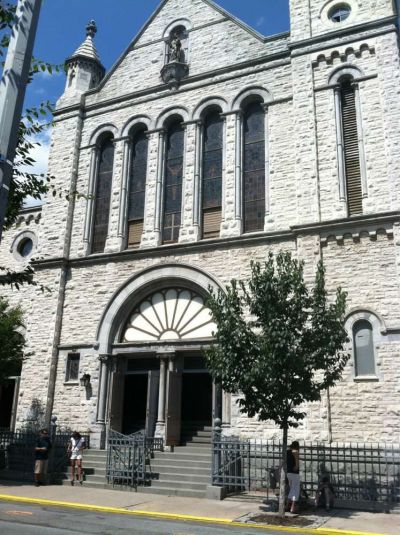For the last 130 summers in East Harlem, Our Lady of Mount Carmel Church has hosted a festival honoring the Mother of Christ. While the celebration began modestly, by 1917 it was attracting thousands of Italians and Italian Americans. The appeal of this festival and the church that sponsored it as well as this specific incarnation of the Madonna herself are icons of Italian American history and culture.
The festival of Our Lady of Mount Carmel is an example of the Italian festa, one of the many wonderful traditions our forebears brought with them from the old country. These street parties, which were dedicated to various saints, mix the sacred and the profane, as one commentator describes them. Along with prayers and donations to the church, there is a carnival atmosphere complete with food, music, rides, and gambling. If you grew up in an Italian American neighborhood, you know how wonderful a festa, or feast as we say in the States, is. You might not know that these celebrations drove the Irish powerbrokers within the Catholic church nuts, which was equally wonderful.
The Irish Catholic hierarchy did not know how to respond to Italian expressions of faith, practices that seemed almost pagan. This, combined with the society’s general anti-Italian bigotry, manifested itself in the church’s open hostility to Italian immigrants. It is little wonder then that the Italian community did not feel welcome in Manhattan’s great Saint Patrick’s Cathedral. They want a church of their own, a church that would reflect their culture. So, they set to the task of building it. Each evening, after a day of hard physical labor, the Italian community of East Harlem came together to build their church with their own hands. Despite this effort, when the building was complete, the Catholic Church could not see past their bias, relegating the Italians to worship in the basement. When it came time to name the church, however, the Italian community stood strong, insisting that it be called Our Lady of Mount Carmel.
This manifestation of the virgin is particularly interesting. Mount Carmel, just 20 miles from Nazareth, was the site of the first church dedicated to Mary. Carmel comes from the Hebrew Karm el meaning God’s Garden. From the perspective of antiquity, Mary is God’s garden – the place where he planted his seed, whose fruit is the Lord Jesus. While this characterization of Mary may seem indelicate in the modern era, we need to remember in that time they did not fully understand the process of conception at the cellular level, how strands of DNA would join to start the process of building a person. In their minds, when a man planted his seed, as the expression goes, he was literally planting a seed in the same sense that a farmer would plant seeds for his crop. Women were just fertile ground from which the seed sprung. This is the basis for the Immaculate Conception as well as the Virgin birth. The Immaculate Conception and Mary’s virginity was necessary so this sacred seed would have suitably pure soil in which to grow. The seed from which Jesus sprang came exclusively from God so that Jesus did not have a sinful nature. Mary passed nothing on to Jesus. She merely provided the environment in which he grew.
A large percentage of Italians who immigrated to the U.S. departed from Naples. Overlooking the port of Naples is the Basilica of Our Lady of Mount Carmel. It is easy to imagine the fear felt by many who were leaving their homeland, the anxiety of going to an unknown place, the sorrow of knowing they would probably never see their family again. Like most of us, they bargained with God. Going through his mother, they promised to honor her when they reached their destination. They would take her with them and spread word of her throughout the world. We were good to our word. In many Italian communities throughout the U.S., you will see churches dedicated to Our Lady of Mount Carmel. In the summer, just as they do in East Harlem, these parishes hold festivals in their honor remembering how she has blessed us in our new home.



